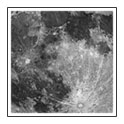“Urbanism: Reimagining the Lived Environment” is an entirely enjoyable show. Given the declarative title, I had expected an academic show steeped in the long tradition of discussion on art and metropolitanism; A show that would take a stab at broadly defining aspects of contemporary urban life. What I found was much brighter and more fun. Curator Julien Robson has given us an exhibit that ducks the usual mired discussion around art and city existence. The wall text and accompanying literature make no mention of modernism’s legacy, Walter Benjamin, industrialization, post-industrialization, late capitalism, the flaneur, the gaze or the Situationist movement. Since I made my trip to Pennsylvania Academy of Fine Arts’ Fisher Brooks Gallery during this past heat wave, I considered this levity a good thing. Late July is not exactly an ideal time for lengthy reading lists and academic discussions.
PAFA frames the show as a home field affair. On their website, they open up the description of Urbanism by mentioning their status as one of the oldest art institutions in the country. Artists in the show are all local heavy-hitters on the emerging artist scene with ties to PAFA, Tyler School of Art or both. As the exhibition description points out, all these Philadelphia-based artists focus on the dreamy and fantastic side of urban visioning.
Amy Walsh's Untitled installation is a complex diorama: a series of scenes inside scenes made from tarps, two by fours, and cardboard. She employs a multiplicity of scales in constructing spaces that, like the urban environments they model, are deeply internal but never fully private. As one peeps through the tears, holes, and windows in her constructions, questions begin to arise as to where exactly the viewer stands. Is it inside or out, above or below, looking down or up? Her work is equal parts smart and playful, and Philadelphia residents are likely to find it familiar as well. In Walsh's composition, things are under constant construction. A well-built artist space is nestled in an otherwise wholly dilapidated structure and a secure looking exterior opens to reveal a collapsing ceiling. The Shakespearean cliche has us thinking of “all the world” as a “stage” but Walsh's work shows it to us as a series of labyrinthine movie sets.
The transition from Amy Walsh's constructions to Ben Peterson's drawings, shifts the viewers’ perspective. A shared theme of building upon failing structures threads the work together. Where Walsh’s sculptures are grounded in the vicinity of Philly though, Peterson’s fine-point graphite and ink drawings take us to other worldly locations on the space-time continuum. In saturated greens, blues, reds and oranges, Peterson creates tableaux of the future afloat in vast plains of white vellum. Each vignette illustrates a different scene from a not so far off post-apocalyptic future. In California, a rooftop earthquake survival sleep-over party has been abandoned. A City on a Hill shows a large, single family home that appears to have been squatted by neo-Puritans who have left their laundry out indefinitely. In another drawing titled Ships Wake, extra large exercise mats and yoga balls have been left inexplicably, mid-workout, on the ground of an Asian town square. The images operate as predictions of architectural decay. They also portray an idealistic vision of community; A suggestion that a culture of cooperation and survival will crop up toward the end of times. In these images our environment and our structures may have failed us but-judging from the vacated scenes and abandoned artifacts- we have not failed each other.
The perspective of the show shifts yet again with Arden Bendler Browning's works. Her color palette is as saturated as Peterson's but more subtle, varied, and dreamlike. Where Peterson impresses us with fine restrained lines, Browning attempts to take our breath away with broad swooping strokes that overlap and intersect to fill huge sheets of Tyvek, an industrial plastic used commonly in building construction. Abstract and void of human figures, her paintings offer a perspective of a city on pause. With compositions like Plenty of Eyes Bendler Browning references the long and diverse history of landscape painting from whence she comes. She conjures the brightness of Kandinsky’s colors and the composition of the Hudson river school’s mountainous passes in transforming urban space from bustling to bucolic. Her work openly articulates the emptiness that subtly pervades the other works in the show; she portrays the still-centered eye of the chaotic urban storm.
The Dufala Brothers take the show’s tone from serious to slightly silly. Instead of the rendered environments the rest of their cohort have presented, the brothers highlight discrete objects of urban life and material culture. The collaborating siblings are known for making sculptures by adding one thing to another thing to get a third funnier and more curious thing. While their practice of juxtaposition proves that some of art’s best tricks are still its most basic, their hip aesthetic and facetious tone make the method seem more a shtick than a tool of inquiry. Adding upholstery to a dumpster, may simultaneously evoke a coffin and a car interior, but the resulting sculpture doesn’t, as the PAFA website claims, “challenge” me “to think again about what art is and what it can be”.
Admittedly though, I curb my cynical resistance about their work when one of their sculptures causes a critical shift in my thinking about the show. Standing in front of an extremely long sneaker foot print manufactured by the Brother’s, I realized that there is something very un-urban about “Urbanism:Reimagining the Lived Environment”. In it’s simplicity, the long clay footprint embodies a sense of vacancy, a quiet, calm and, above all else, emptiness that pervades the show at large. The sculpture's poetics pointed me in two divergent directions at once. On one hand, it thrust me into a distant future where archeologists dig up mythically proportioned human footprints. On the other hand, it pulled my attention to the present Philadelphia streets and sidewalks just outside the Samuel M.V. Hamilton Building’s doors.
Each work in the Exhibit touches on aspects of urban space, but together, the works conspire to make a strong statement about a desire for silence and emptiness that is antithetical to metropolitan life. The show is about environments, but rather than lived, as the title states, they are free of people--unpopulated. Isn't this dream of freedom from others the kind that urges Urban Flight (white or otherwise)? Isn’t it dreams of wide open, contemplative spaces that drive people to vacate toward the suburbs?
Alternately, this dream of creating distance between one's self and others is a driving force behind what we call gentrification; when people, without the means or inclination to move to the outskirts, buy up bits of dilapidated property in the city and then nest outward creating familiarity buffers and comfort zones around them. This show might be fantastic, but is it really about urbanism? Or is it an escapist fantasy? Is it about a “reimagining of the lived environment”? Or the construction of a more amenable ones? Is it a coincidence that the show's palette is so close to IKEA's?
Ever since panic broke out on the streets of London this month, I have the Smiths stuck in my head. Morrissey's voice embeds itself still further as the contentious debate around the increase in “flash mob” violence here in Philly leaves me wondering to myself “could life ever be sane again?” The feeling of being alive in a city is, in my experience, the feeling of being in close proximity to others. Sometimes this is engaging or euphoric but, just as often, it is stressful and wrought with anxious uncertainty. In Philadelphia our city streets, buildings and sidewalks are definitely populated.
If local and world-wide events are any indication, then tensions are on the rise in many cities right now. This being the case, I can’t blame those who dream of escape. I'm just not sure it is urban. As I recall standing in front of the XXXXXXL footprint, thinking about the teeming sidewalks outside the gallery, I realize that this show “says nothing to me about my life”. It might be hot outside, but maybe now is a great time for heavy thinking, intense conversation and engagement with history. Perhaps it is a very bad time to opt out of dialogue in favor of fantasy. I’m not suggesting that we hang the proverbial DJ: Julien Robson, but I am suggesting we seriously question his vision and perspective.





 PHOTO COLLAGE: Suzanne Seesman
PHOTO COLLAGE: Suzanne Seesman